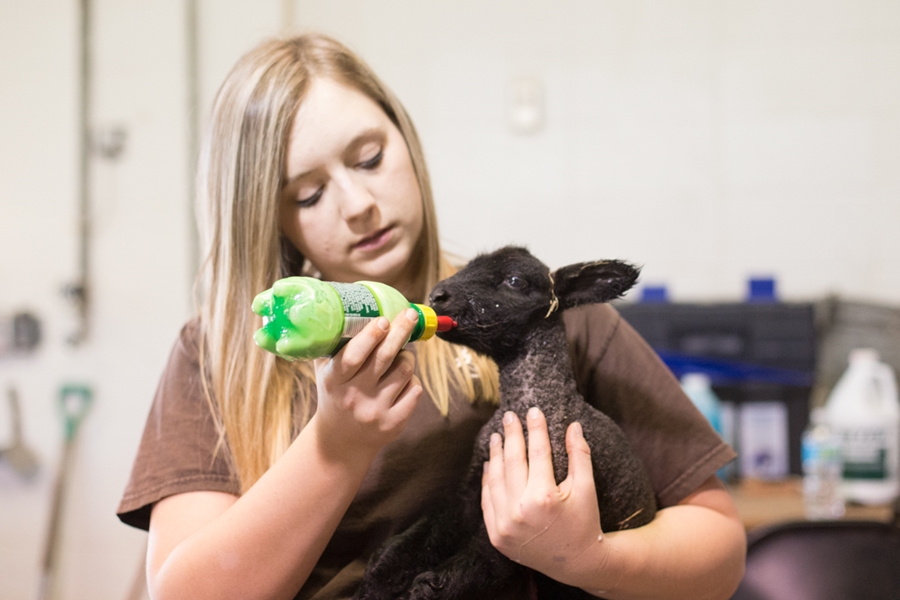
Jason Apple's Sheep Production class allows students the opportunity to step out of the classroom and into a real world farming and veterinary situation. During lamb watch, all students in this class are required to observe and assist in the birth process of a lamb.
"There are two reasons we do this," said Apple. "First is to give them experience that the majority of students have never had. The large majority of students have never really been around small ruminants. It's also good to have students there to assist. Lambs don't always present themselves normally."
Each year, dozens of sheep are scheduled to lamb consecutively in the spring, which makes this opportunity available to students every single spring semester.
While on lamb watch, the students are required to show up periodically between 6 p.m. and 6 a.m., preferably at two hour intervals; 6 p.m., 8 p.m., 10 p.m., sometimes midnight, and then again at 6 a.m.. They are responsible for checking the newborn's naval, making sure the newborn is dry, breathing, and nursing appropriately, and identifying the lamb with its mother.
To prepare the students, Apple gives a lesson on obstetrics and outlines what to expect, as well as what he expects from the students.
"They take notes," said Apple. "It's a great experience that gives them an opportunity to be a part of the birth process. Lots of these students dream of being vets and aspire to help, so this is their opportunity to help. Usu- ally in the first week, I spend a lot of time out there helping them out and making sure ev- erything runs smoothly. I don't know if you can really train someone on what to expect, but we do our best. They learn lots of things and we learn lots of things. It's definitely a hands-on class, and each year is a new experience."
Topics
Contacts
Lauren Husband,
Animal Science
479-575-3195, lhusband@uark.edu